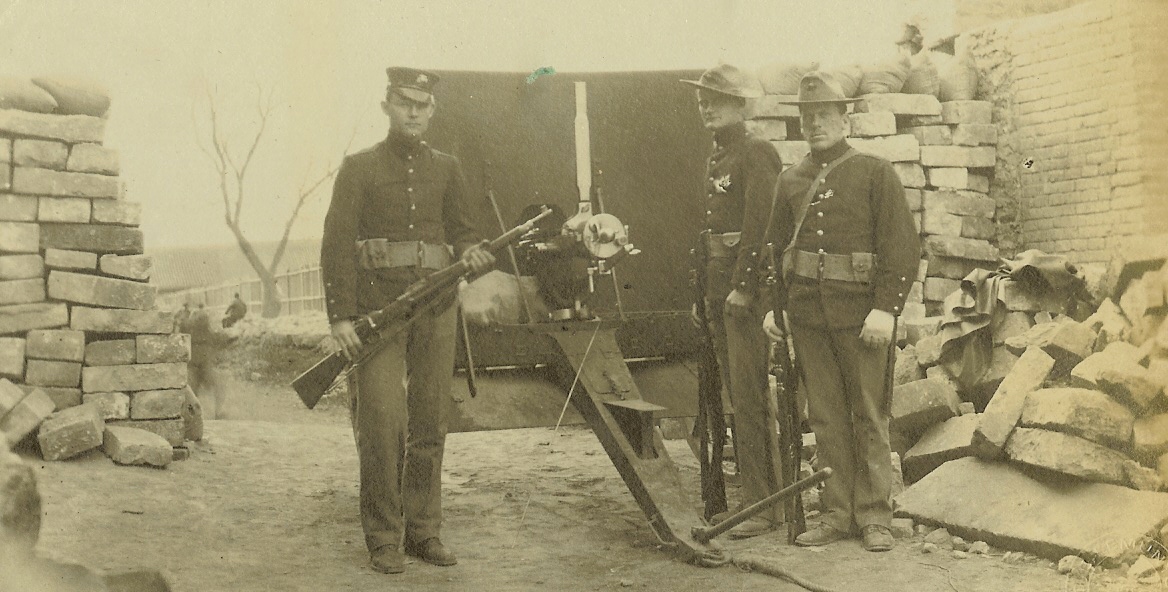
At the baricades on Wall Street
One thought never far from the minds of foreigners residing in China was the fear of being caught in a massive wave of anti-foreign violence simialr to what occured during the summer of 1900. Fortunately during our period of interest those fears never fully materialized. But to the members of the Marine Guard who wintnessed the Peking riots of 29 February 1912 it seemed the Boxer violence was about to repeat itself. This dangerous situation developed as fallout from the first Chinese Revolution of 1911. Although the Dowager Empress issued abication edits on February 12th, 1912 formally ending the Qing Dynasty and opening the way for the creation of a republic, China was not at peace. Southern nationalists remained highly suspicious of the new President Yuan Shih-kai, and his supporter's commitment to the Republic. For several weeks both sides maneuvered to place themselves in a position of advantage for the show-down they knew would come.
Following negations between President Yuan’s supporters and the Southerners it was agreed a conference would be held in Peking to address the issue of governance. On February 27 the gates of the city were symbolically opened to admit the “Nanking delegates” from the southern faction. If bringing together both sides was meant to lower tensions and stabilize the country, it had just the opposite effect in Peking. As Western observers noted, neither Southerners nor the new Central Government fully trusted each other. Marine Capt Thomas Holcomb and 1st Lt Pam Bigler, whose Chinese language skills allowed them to troll the city, searching for intelligence, had for weeks been hearing rumors of a possible attack on Peking.
February 29 was pay day for the Marine Guard and as customary, late afternoon meant liberty. Fortified with their pay, Marines on the liberty list left the compound and spread out through the city looking for a night of fun. Unbeknown to the Marines, at the same time elements of the Chinese 2nd Division began gathering outside several of the city’s northeastern gates to express outrage over lack of pay. Soon they turned their anger on nearby shops and began looting and burning. Then they fired several artillery rounds at two of the city gates which soon gave way. Mutineers now poured into the city and began looting, burning and killing anyone who stood in their path. Criminal elements seizing the opportunity for quick riches joined in as the mutineers spread throughout the city.

Peking in flame 29 February 1912

One of the first Americans to witness the fury of the riots was Marine Detachment Commander Maj John Russell’s young daughter, Brooke. Brooke, who would later be known as New York socialite Brooke Astor was attending an event at a mission school for blind children that fell in the path of the rioters. Alerted to the danger, Brooke’s Chinese nanny frantically pulled her out of the school and placed her into a rickshaw in an attempt to reach the safety of the Legation Quarter. Meanwhile, back at the Marine garrison, several men debated whether they were hearing the approaching sound of gun fire or another round of celebratory fireworks. Doubt was soon erased when bullets began to fly over their heads and a round from the mutineers cannon crashed through a tent on the compound, interrupting according to Pvt Jodon, a perfectly good card game. Fortunately for the players, the round proved to be a dud, but it did provide the impetus for a Trumpeter to sound a “Call to Arms.” 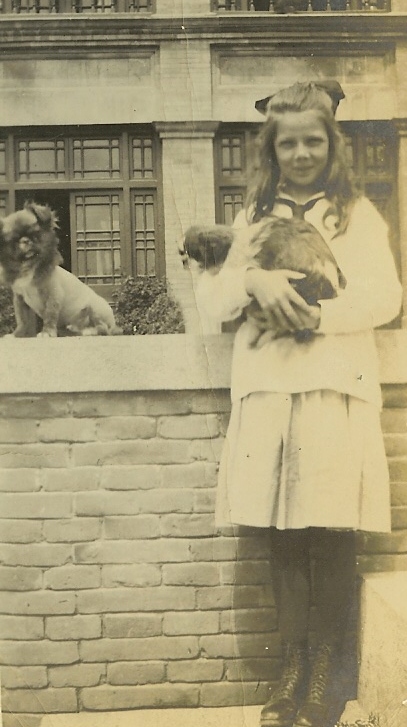
Brooke Russell (Astor)
Although the Americans, as well as the other legations, may have been blindsided by the riot, each nation’s guards rapidly implemented pre-coordinated defensive plans that called for the sealing of the entire Legation Quarter. The Americans and Germans were responsible for holding the same critical section of the Tartar Wall that they held during the Boxer Revolt. This section ran from the Hata Men tower to the Chien Men tower. In addition, Marines on the wall seized the Ch’ien Men tower itself which gave them a commanding view of almost the entire city. With several of their 3” naval landing guns emplaced on the wall they were now in position to bombard any portion of the city should it prove necessary. Other Marines were tasked with blocking off the western portions of Wall Street and Legation Street with sandbags looped with firing ports. A British traveler writing a year after the event occurred, described how witnesses saw the Marines in the process of sealing Wall Street, desperately pulling paving stones up and blocks out of the Tartar wall to complete their barricade. To further strengthen these positions each area was supported by either a Gatling gun or a Colt machine gun. Connecting these strong points, the Marines relied on an eight foot high firing looped wall that ran the length of their compound and overlooked the parade glacis which offered a clear field of fire.
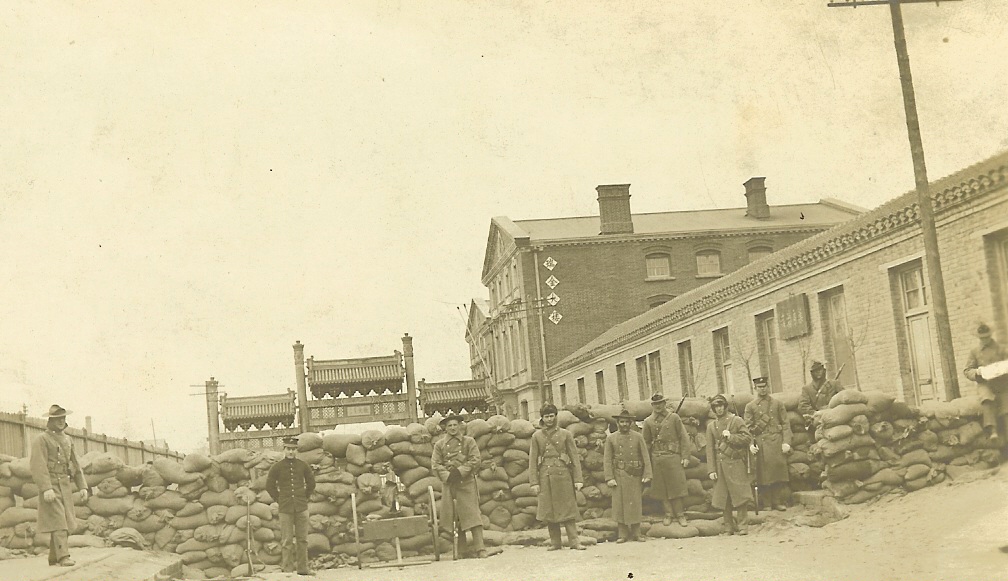
At the barricades on Legation Street
You really have to believe this was not one of Maj Russell’s better days. His compound was being hit by stray bullets; his only child was unaccounted which drove his already high strung wife to become hysterical and a good portion of his men were scattered throughout the burning city. To compound his problems missionaries were streaming in to the compound requesting Marines be dispatched to defend each of their missions. Faced with multiple challenges, Russell reported his situation to the American minister who probably at his recommendation called for reinforcements from Tientsin. The Minister placed a call to Maj Arrasmith of the 15th US Infantry, requesting he immediately send all available men. Within hours of the request Arrasmith put 206 men, almost his entire force, on board a train that raced through the night toward Peking. Next, Russell organized parties of men to go out into the city to bring home his liberty bound men. As to the missionaries, they if they chose to remain in their missions this night they were on their own. The one bright spot in the whole evening must have been the safe return of young Brooke after a British patrol located her just north of the Legation Quarter.

The center of the Marines line facing the Glacis
Throughout the night as Marines, some of them drunk and unfit for duty, were brought in from liberty, other Marines joined guards from other legations to seek out their isolated citizens. At 2300 Capt Holcomb left the legation compound to bring in an American family trapped by rioters. Then at 5:30 the next morning Holcomb accompanied by Army Attaché Capt Reeves, and elements of the newly formed Marine Mounted Detachment left their compound to cross the city to rescue another American family trapped near the Bureau of Engraving. Holcomb would later tell a reporter “As we crossed in front of the Ch’ien Men and looked out through the Middle Gate that had been open for the Nanking delegates to enter some days before, the flames from some great shops burning outside rolling up and filling it made it look like the gate to hell.” Holcomb and his Mounted Marines soon found a safer gate to pass through and rode the length of the city to bring in the American family. From my research it appears this was one of the few operational missions the Mounted Detachment would take in its long history in Peking.

Guard post on the Tartar Wall
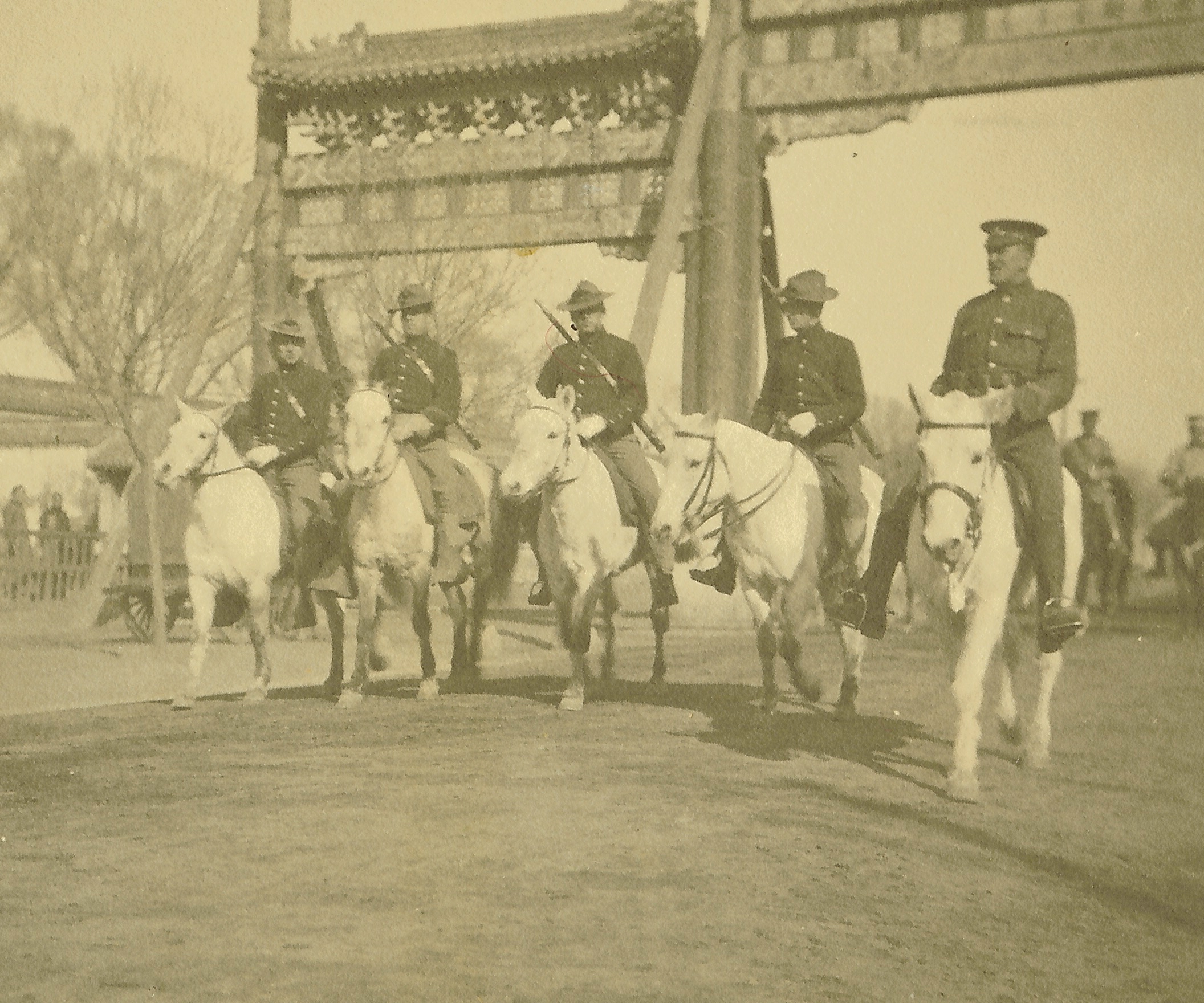
Members of the Mounted Detachment, 3 March 1912
By 1000 the next morning with the men of the 15th Infantry marching into the already overcrowded compound, and barricades firmly erected around the entire Legation Quarter, Maj Russell now felt confident enough to dispatch some of his men to act as guards for the American Board Mission. Throughout the day and into the next night the city continued to burn. An American reporter would later note the Marines atop the Tartar Wall were “silhouetted against the light of the flaming sky of the Chinese city.” Even the house of the Republic’s President was threatened by looters. Return to order came slowly. In one section of the city armed merchants banded together to defend their stores, while wealthy households in another section bought off the looters. Finally, on the morning of March 2nd elements loyal to the Chinese President begin to fan out through the city arbitrarily beheading both looters and unlucky coolies hired by shop owners to recover the remains of their employer’s property. Several streets ran with blood as the beheading parties made their advance. More Marines trickled in, reporting they had been trapped outside the city gates and were almost killed by Chinese mobs. The mutineers, weighted down with loot now slipped out of the city and headed south bringing terror to several other cities.

A Marine barricade covering the approach to wall Street. Note the Gatling Gun.
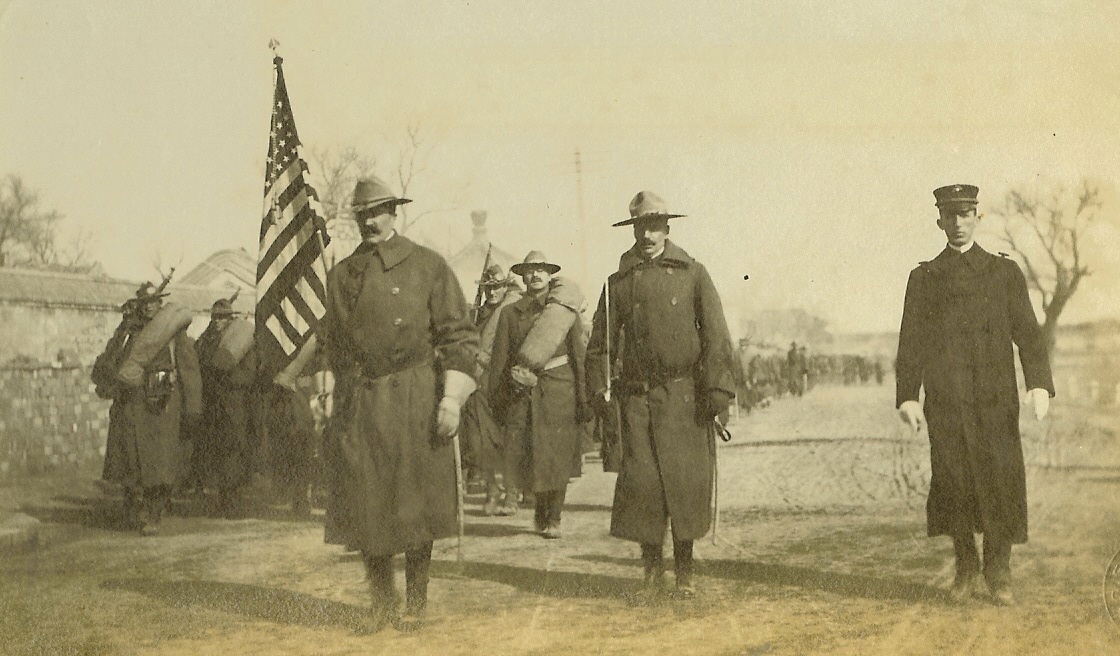
The 15th US Infantry arrives from Tientsin. Lt Sam Budd escorts them into the Legation

Marines detailed as guards for Amercian Missionaries recieve last minute instructions before departing
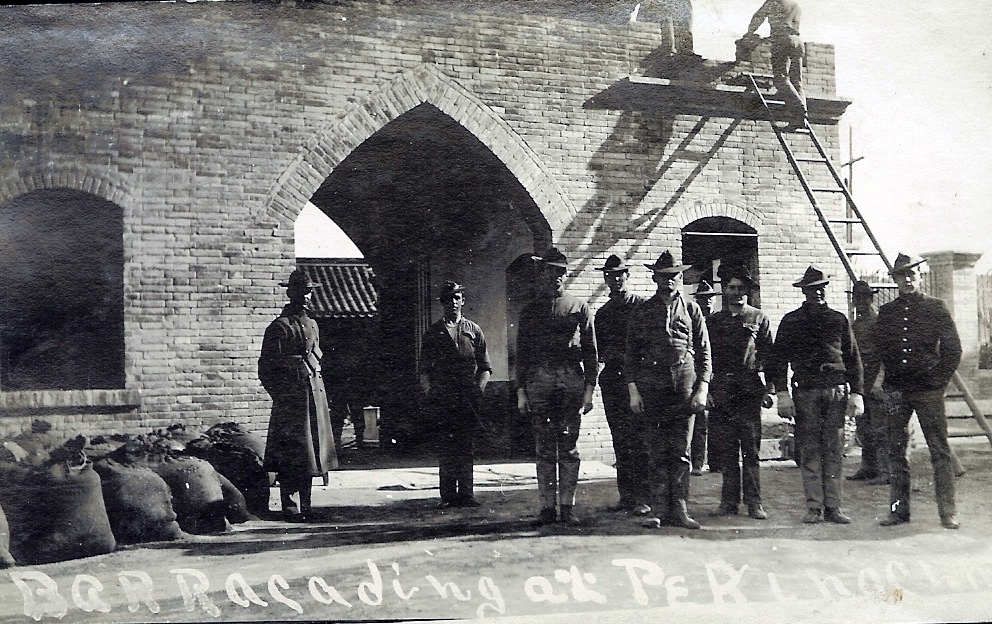
Marines acting as missionary guards

Chinese troops restoring order to the city. Note the heads of looters being dragged
Despite their fears, foreigners did not appear to be the primary target of this riot- it was the Chinese that suffered at the hands of their own troops. Apart from a few isolated instances in Peking and the surrounding countryside, foreigners were unmolested. But just to show they were prepared to act if necessary, 800 soldiers representing each of the foreign legations staged a parade through the city on 3 March with the Marines leading. This time, unlike 1900, the foreign soldiers were met by cheers from a number of Chinese citizens who viewed them as a stabilizing presence. On the 10th of March two additional companies of Marines arrived in Peking to relieve the 15th US Infantry while the Marine Mounted Detachments continued to patrol the city along with their English and Japanese counterparts. Although things remained tense in the city through the summer, the threat of violence slowly deescalated, allowing several companies of Marines to return to their ships.
Over the next two decades there would be other alarms and threats to the Legation Quarter, but nothing would come close to the riots of February 1912. When for a few days foreign residents of Peking held their breath in fear they were witnessing the start of another Boxer Uprising. As for the Legation Guard, they would take lessons from this event and refine their procedures for how they would respond to future crises.
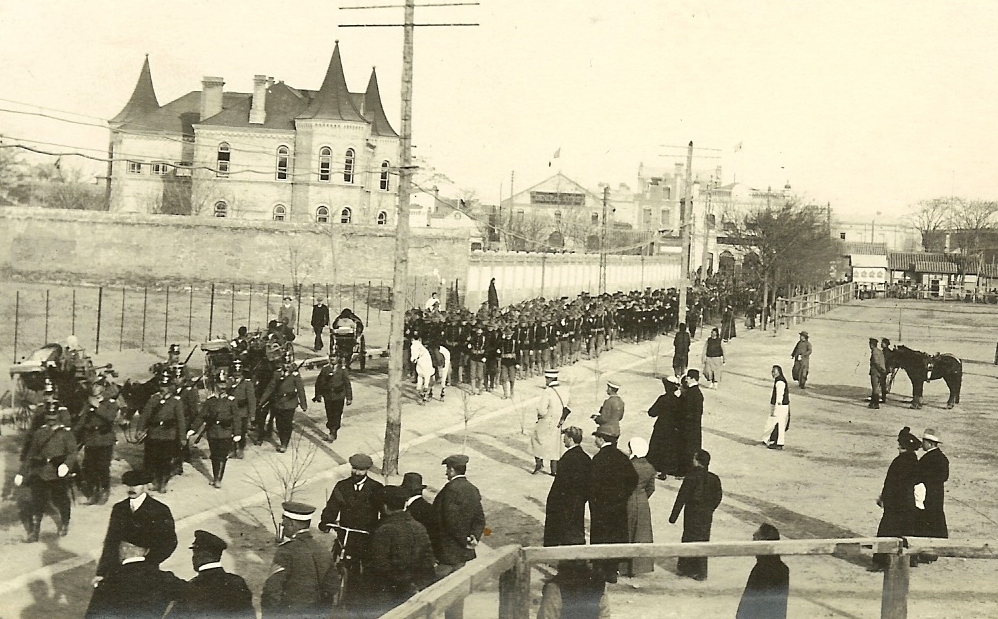
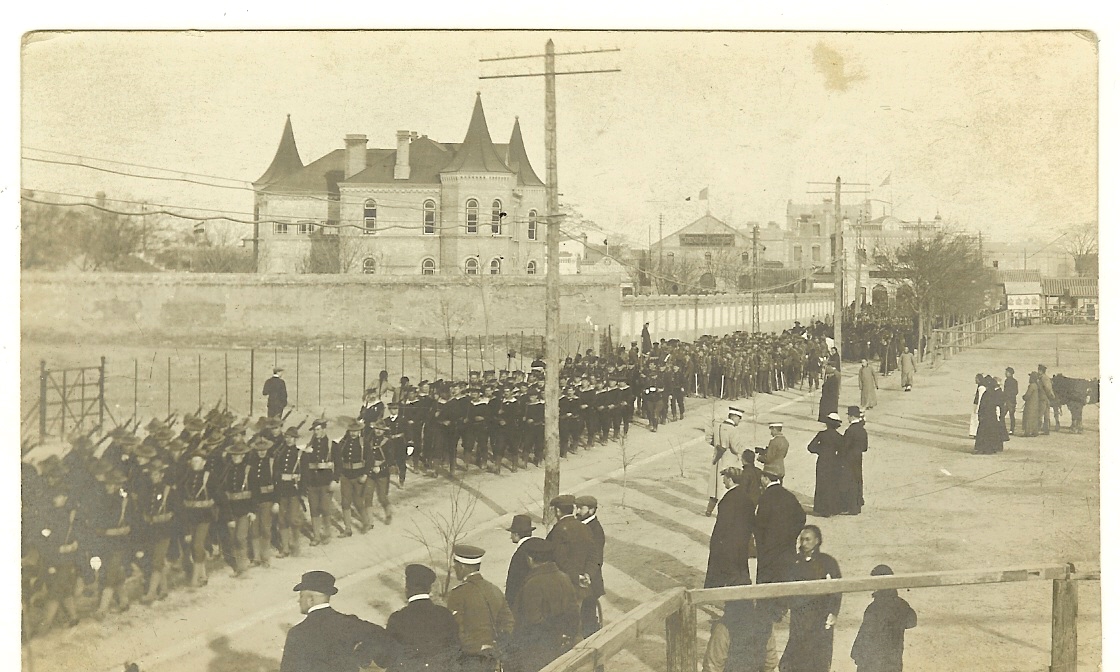
Allied parade through Peking, March 1912